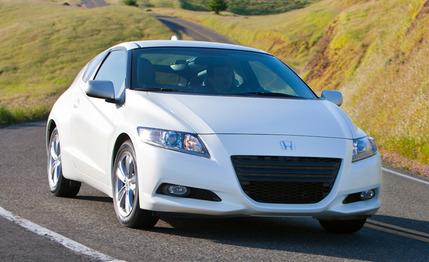 First Drive Review
First Drive Review
It’s tempting to think of the CR-Z hybrid as the second coming of the CRX, Honda’s light, tossable mid-1980s funster, what with the two cars’ stubby rear ends, two-seat layouts, and frugal intentions. At the CR-Z launch, in fact, Honda plopped us down in a cherry 1985 CRX Si and told us to go nuts. We did, and we’re sorry, Big H, but the CR-Z just isn’t quite as awesome.
Where the impish CRX used lightness and a stripped-down approach to deliver entertainment and efficiency, the CR-Z looks to a gasoline-electric hybrid powertrain. The difference between the two paths is stark, or so goes conventional wisdom. With less weight and simplicity come fun and momentum-style hoonage, and with a hybrid powertrain comes, well, soul-crushing dullness. Somewhat shockingly, however, this hybrid is entertaining, even as it tries to marry the disparate concepts of sport and efficiency.
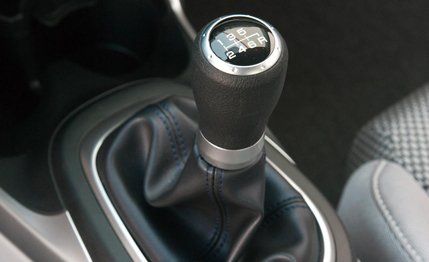
Nowhere is that conflict more evident than in the two transmissions. Opt for the six-speed manual, and the CR-Z delivers perhaps the most transparent hybrid experience available today, because you control the shift points and how quickly the gears are changed. Particularly with the three-mode adjustable drive system in sport mode, it’s a relatively fun little car. But go for the CVT, as Honda expects 75 percent of buyers to do, and besides being a downer of a person, you lose any sense of joy and immediacy. In the CVT’s manual mode—actuated via standard paddle shifters—you can wind through seven fake ratios, but the “shifts” into those ratios are slurred and slow. Moreover, although the four-cylinder is never sonorous even with the stick, the CVT causes an unpleasant droning.
Heavy, Man
At 160.6 inches long, the CR-Z is 16 inches longer than the original CRX, but it doesn’t look like that much with the two cars side by side; for modern reference, the CR-Z is an inch shorter than Honda’s own Fit. It’s not as light, however, with Honda estimates putting the CR-Z around 2700 pounds. We measured the bigger Fit at 2500 pounds with a manual, and a CRX Si we tested 25 years ago weighed in at a svelte 1840. Of course, beyond the hybrid system, the CR-Z includes a boatload of stuff unavailable on the original CRX: airbags, a couple of decades’ worth of crash-worthiness improvements, and doors thicker than a Trapper Keeper, to mention a few. Still, from behind the wheel, you never shake the sense of extra weight.
At the heart of the CR-Z is the 1.5-liter four-cylinder from the Fit, here making 113 hp and 107 lb-ft of torque. It mates to Honda’s Integrated Motor Assist hybrid system as seen in the Insight, which is comprised of a nickel-metal hydride battery pack and a 13-hp electric motor. Combined output stands at 122 hp and 128 lb-ft of torque (123 lb-ft with the CVT). Acceleration isn’t scorching by any means, but the CR-Z doesn’t feel poky like the Fit or Insight. Helping foster that sense is the sport mode, activated via a button to the left of the steering wheel. In sport, throttle sensitivity is increased, the steering tightens, the electric motor provides more assistance on manual-equipped cars, and in CVT models, the “gear ratios” are optimized for acceleration. There are also normal and econ modes, and the latter dulls throttle response, retunes the CVT for fuel-economy gains, turns down the fan speed and minimizes compressor use for the A/C, and reduces power and torque by four percent except in wide-open-throttle situations.
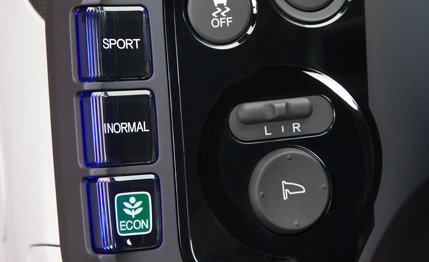
The mileage returned by the CR-Z isn’t as stellar as you’d expect in a hybrid this small, at 31 mpg city and 37 mpg highway with a manual and 35/39 with the CVT. (The EPA tests were run in normal mode.) Would those numbers be the same if the car were lighter with no hybrid gadgetry? Let’s just say we got 32 mpg from that 1985 CRX Si. But before you start ranting about how disappointing the numbers are—“I’ve seen 167 mpg in my Prius! Uphill and into the wind! Rarghargh!”—remember that Honda has the Insight and upcoming Fit hybrid to appeal to the hypermiler crowd. The CR-Z is a sporty car with green leanings more than anything else, and that likely guided the engineers’ efficiency targets.
A Great Ride and More Steering Feel Than Expected
The chassis plays a big part in making the hybrid experience transparent. The brakes are a touch grabby, but they have only the slightest hint of hybrid-style sponginess, and the transition from regenerative to conventional braking is essentially seamless. The linearity of the brakes is good, too. The electrically boosted steering has more feel than we expected, and turn-in is eager in normal mode and quick in sport. Where the CR-Z impresses most is in ride quality. Generally, when something has the wheelbase of a Matchbox car, you can expect to be revectored as you hit midcorner bumps, plus a jarring, crashing ride—the sportiest Minis being prime examples. The CR-Z exhibits very little of such behaviors, though, with part of the credit going to the standard 16-inch wheels and relatively tall sidewalls of the 195/55 Dunlop SP Sport 7000 rubber. That’s not to say the CR-Z is firmly planted all the time. Pitch this Honda hard into a corner with stability control disabled and lift off the throttle, and the back will swing around (and quite quickly due to the short wheelbase), so you need to be ready to dial in some opposite lock. Blame the weight of the batteries, which live between the rear wheels. The handling would benefit from a firmer suspension—it would shore up slight body roll, for one thing—but at the expense of compliance. Such a strategy would certainly alienate a good chunk of buyers, a large majority of whom will find the current setup to be sporty enough.
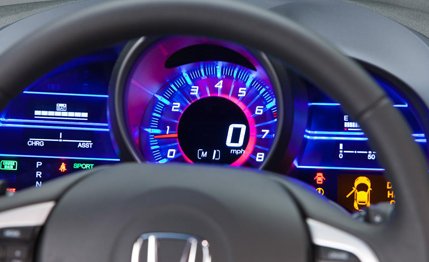
The CR-Z comes in three flavors: base, EX, and EX with navigation. Honda says pricing will start under $20,000 with destination charges and top out at just below $24,000 when the car goes on sale in late August. (Update: Official pricing has been released. A base model will cost $19,950 and a top-spec EX with navigation and the CVT will be $23,960.) Standard across the range are stability control, power mirrors, power locks and windows, keyless entry, automatic climate control, cruise control, a tilting and telescoping steering column, USB and auxiliary inputs, LED taillamps, and the three-mode drive system. EX models get HID headlamps, fog lights, aluminum pedals, a leather-wrapped steering wheel, and an upgraded audio system with a subwoofer. The rear cargo area will accommodate a couple of golf bags with the rear bulkhead folded down and two suitcases with it up, not too bad considering the car’s diminutive size. To the CR-Z’s credit, too, it has the best interior among Honda’s cheaper offerings, with cloth door inserts, a soft-touch dash covering, and attractive switchgear. It’s certainly better than the cost-cut, hard-plastic-riddled cabin of the Insight.
Who Will Buy It?
We admit to wondering who’s going to buy this car. If fuel efficiency is the goal, better mileage (and practicality) can be found in the Toyota Prius and the Insight, which are EPA-rated for 50 and 41 mpg combined, respectively. And those in the market for an inexpensive sporty car can also shop the conventionally powered Mini Cooper and Scion tC, while perhaps pocketing some savings. The Mini in particular isn’t much off in efficiency, either, being rated as high as 32 mpg combined. Further, all those CVT buyers will effectively negate the CR-Z’s reason for being, its sportiness. Without that, you’re left with a less-efficient two-seat Insight that can’t carry as much stuff. Sounds dicey, even at Honda’s stated U.S. sales goal of 15,000 per year.
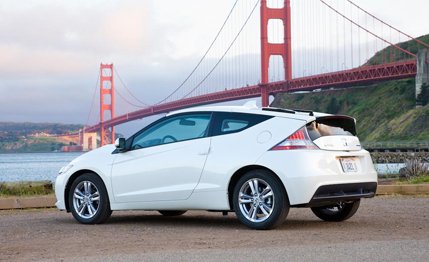
Meanwhile, we await word of a CR-Z Si. If it does happen, we’d prefer such a car to be created by ditching the hybrid stuff, which adds roughly $2000 to the cost of the regular CR-Z; further chassis tightening; and bumping the 1.5’s output by 20 hp and 20 or so lb-ft. Honda, on the other hand, appears to lean toward turning up the wick on the electric motor for an Si. At the very least, the base car shows that a desire to build fun-to-drive vehicles still exists within Honda. After the death of the S2000, the big-ification of the Accord, and the introduction of off-target vehicles like the Crosstour, we were beginning to have doubts. Still, it’s sad that this is the second-sportiest U.S. Honda behind the Civic Si, and you could argue that in making this car hybrid only—instead of making the hybrid powertrain an option—the company still is trying to be all things to all people, and that it would be better served focusing on what led its success in the first place: making stuff that’s great and not merely good. Ultimately, although the CR-Z can be good, it’s a compromise. And that’s a shame, because it could be even better.